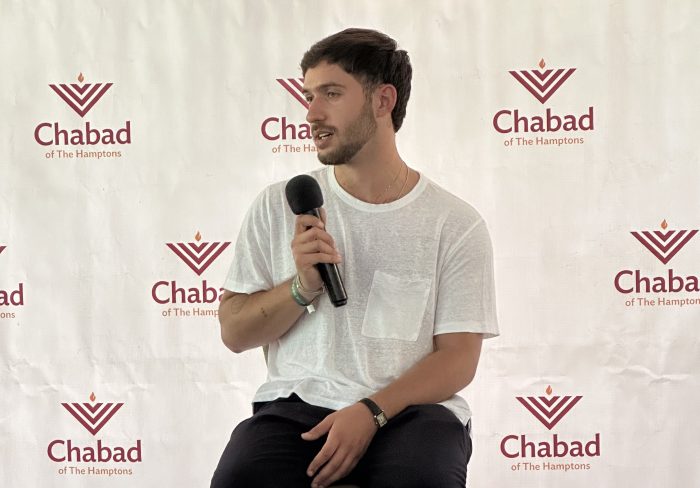Most residents in Manhasset think of our Middle School and High School as “two” schools. That is a mirage. Step into the shoes of the Middle School student: When they were “seniors” in elementary school, they were the “big” kids on campus—mature, confident, and empowered with experience and knowledge. Soon after “graduation” they enter the “Middle” School, which is essentially the High School. These mostly pre-pubescent 12-year olds then share the halls with fully grown, adult-looking 16- and 17-year olds. For many, this shocking environment can result in a difficult adjustment–mentally, emotionally, and socially. At best, it is awkward for both the High School and Middle School students; but often it is an intimidating and disconcerting experience for the younger set. The 6th and 7th graders also share lunch periods with the High School students—the “two” schools are on the same lunch lines and dine within proximity of one another. In this setting, the 6th and 7th graders are exposed to language and conversation content by High School teens which, at times, can be “mature.” These “two” schools also share many of the same restrooms, and Middle School children have the opportunity to witness High School teens chewing tobacco, “smoking” E-cigarettes, etc. Many parents aren’t even aware of this amount of mingling between the “two” schools.
This letter doesn’t intend to suggest that a separate Middle School be erected; however, there should be more boundaries between the “two” schools. “Split-sessions” can create more separation. Middle School kids can begin their day without the High School kids for 2 periods, and High School students can have 2 periods without Middle School students at the end of the day. Assuming Middle School were periods 1 to 9, and High School were periods 3 to 11, the Middle School kids could lunch during periods 4 and 5; and the High School teens could lunch periods 6, 7, 8, 9.
My high school had 10,000 students. Split-sessions worked to address crowded conditions. This high school was able to coordinate split-sessions with sports teams, after-school programs, teachers, and buses for 10,000 students. It takes work and compromise to plan and negotiate this. However, this scenario yields benefits other than cost savings for capital expenditures.
The school board and community members’ efforts to analyze the schools’ space requirements and develop a plan for expansion is commendable, and the idea that this will cost $200 more per year for a home assessed at $1.4 million sounds reasonable. However, what would the additional annual incidental costs be for utilities, insurance, and custodians, to name a few?
Reconsider of the concept of “split-sessions”: To address the concern of sports and game schedules, an amended suggested split-session schedule could be: Middle School from 7:45 to 2:40 and High School from 9:22 to 4:12. Many kids are already at school by 7:30. The High School schedule would benefit from the prescribed recommendation by the American Academy of Pediatricians (AAP) that says “There is strong scientific evidence to support later school time for high school students. Data shows that puberty may biologically wire teens to stay up late and wake up later – something about hormonal changes shifts their body clocks.”
Are sport schedules still a problem with these hours for High School students? If it’s possible to shave 30 seconds from each class and 30 seconds between classes, High School could end at 4:03. Most games start at 4:30. Away games may need to start at 4:45, which seems reasonable, manageable, and negotiable with other schools.
In summary, here are somebenefits to “split-sessions” for Middle School and High School:
- The Middle School and High School would have improved boundaries.
- The transition and on-going experience for elementary school children into Middle School would be less stressful.
- Middle School and High School students would lunch with their respective “schools.”
- Six lunch periods instead of five would increase cafeteria space by 20%; the “need” for air-conditioning could be deferred for future reconsideration and analysis.
- High School students would learn and retain information better during a later start time.
- There would be less traffic and safer conditions for cars, buses and pedestrian students during pickups and drops-offs.
- There would be a lesser need for a $25 million bond to fund an expansion of rooms in secondary schools, as additional rooms would be available during periods 1,2,10, 11.
- Split-sessions are flexible. When student population ebbs in the future, it is easy to revert to a one-session school day.
Split-sessions can address many issues besides reducing the proposed $25 million bond, especiallythe unaddressed issues caused by a combined Middle School and High School.
Denise Friscia





























